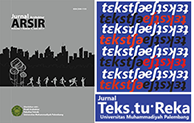Space Syntax Based Accessibility Optimization: Case Study of Pedestrian around UIN Walisongo Planetarium
Sari
As a new Edu-tourism in the middle of the campus environment, the Planetarium building has a strong attraction both from academics and from the general public. High activity in the area around the Planetarium needs special attention, one of which is pedestrians. The study focused on accessibility analysis by looking at its effect on the quality of the spatial configuration. The research was conducted using quantitative methods with a descriptive and simulation research framework. The simulation process is carried out using a space syntax approach with the DepthmapX software. The existing condition shows that several pedestrian sections around the building are not connected to each other. This results in the circulation not running optimally and can interfere with the comfort of pedestrians. Spatial engineering is carried out by connecting disconnected pedestrian sections with the concept of continuous footways and continuous crossing. Space engineering considers sustainability and mileage aspects to provide effective and efficient accessibility. This scenario produces a new pedestrian that is interconnected and has a high value of integration and intelligence. In general, this engineering model can at least provide a measurable picture of how to respond to dense human activities and movements, which cannot be achieved from field observations alone.
Kata Kunci
Teks Lengkap:
PDF (English)DOI: https://doi.org/10.32502/arsir.v7i1.5207
Refbacks
- Saat ini tidak ada refbacks.
Indexed by:

Arsir : Jurnal Arsitektur is lisenced under a Creative Commons Attribution-ShareAlike 4.0 International License.









